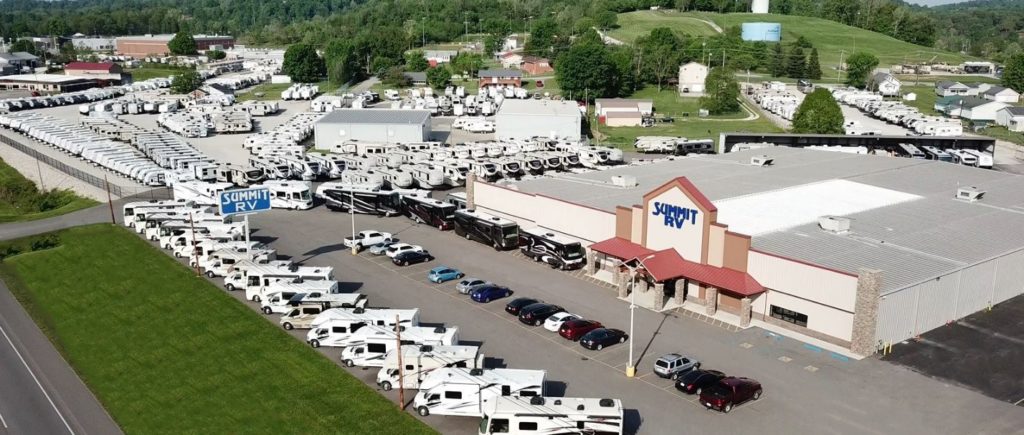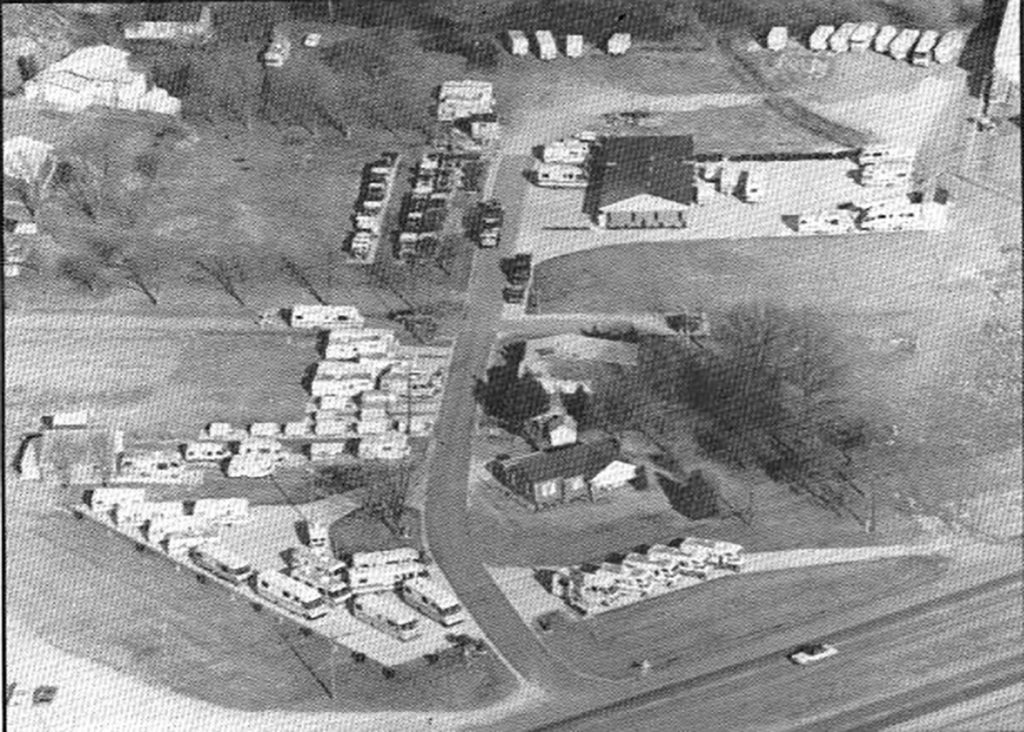Don’t miss out!
Get the latest resources sent directly to your inbox.
 Running an RV business can sometimes feel like a baseball game. Everyone has a role to play, you rely on statistics for the big picture and your fans, or customers, end up having a fantastic time at the end of the day. Summit RV in Ashland, Kentucky, has the largest inventory in the area, with over 20 acres of travel trailers, fifth wheels and motorhomes for customers to choose from.
Running an RV business can sometimes feel like a baseball game. Everyone has a role to play, you rely on statistics for the big picture and your fans, or customers, end up having a fantastic time at the end of the day. Summit RV in Ashland, Kentucky, has the largest inventory in the area, with over 20 acres of travel trailers, fifth wheels and motorhomes for customers to choose from.
Founded in 1976, the business began with a family of RV’ers who had an interest and enjoyment in camping. It turned into a very good business. As the company grew – they needed to play more like a team. We sat down with James Bradley, second-generation owner of Summit RV, to discuss how they win “the game” every time.
James: “We separate ourselves from the competition by always striving to do the right thing. There are many others who do the same, but our people really care about what they do. We have many long-term employees that have been with us for quite some time.
Our objective is to make the right decisions and to treat a customer’s RV, whether new or in for a repair, just like it were our own. We do the same with both our customers and our employees. We like to think of ourselves as one large family.”

James: “My role in the dealership is owner and that has transitioned for me just recently. I have a full-time general manager, but I’ll always be involved.
Now, my role is to ensure that we operate the dealership in a way that is proper, efficient and respectful to our customers. We set goals for each of our divisions, whether it be sales, service, finance, parts or accessories. So, I’m looking at it from a broader perspective.
I explore what we’re doing and how we’re doing it, looking at the things that got us to where we are as our dealership has grown. It’s important that we don’t lose sight of our core values, while being open to the changes that we see in the world.”
James: “On a lighter note, the toughest part is actually the enjoyable part as well: talking with customers about where they’re going, where they’ve been and the adventures they’ve had. Sometimes we realize that we haven’t had the opportunity to go there ourselves!
But, really, the toughest part of the job is communication, and how that flows throughout the dealership and to and from the customer.”

James: “We implemented IDS in 1998. We had just recently expanded and built two new buildings on our campus, and we were growing to about 15 employees at that time. We saw the need to modernize and to have a better sense of tracking than just manual written receipts for example. IDS was really the software supplier that came to the forefront as I looked for someone to fill that role.
The thing that I liked about IDS was that they served dealerships much larger than us, including multi-location ones. Most people that I talked to said that IDS had it together the most. I thought, if they can handle larger operations, then they would be the choice for us because we hoped to grow at the time.
James: “Prior to IDS we had a much smaller system provided by one of our suppliers. It was primarily engaged for just parts. So, there really wasn’t a comparison there. IDS has really streamlined communication and has helped us in so many ways.
I like the reporting and the real-time access to what’s going on in the dealership, including the way that you can communicate from the service department, to sales, to parts and then to our customers. It makes things so much easier.”
James: “The must-have feature is the sales quote, so that you can always have the history of what quotes you’ve made to customers regarding the purchase of a new RV.
The CRM is something that’s starting to grow and become very necessary in terms of communications. We want to build relationships with the customer from when they become interested, and through the lifecycle, until after their purchase. We want to make sure that we’re taking care of them and following up.
The dealer management software gives you that snapshot of how you’re doing and what you might need to improve, change or modify. Pulling reports from sales, service, finance and parts puts it all together in one picture.”
James: “There are several reasons, but one of the most important ones is records storage. You need to be able to capture and track what’s happening in each department. If you don’t have an integrated system where it all ties together, you don’t get to see the big picture
If you’re using one person’s system for service and someone else’s for parts, or it doesn’t tie accounting in properly, you really don’t have that broad view. You need to own that information and know that it’s accurate.”

James: “IDS’ contribution has been rather huge. I think it goes back to communication. It ties it all together between the various departments, the employees and the customers. And it’s your scorekeeper. It’s like a ballgame. The team’s playing, and IDS puts it all together. Like a scoreboard, you can look at it and know where you stand and if you’re winning or losing.”
Get the latest resources sent directly to your inbox.